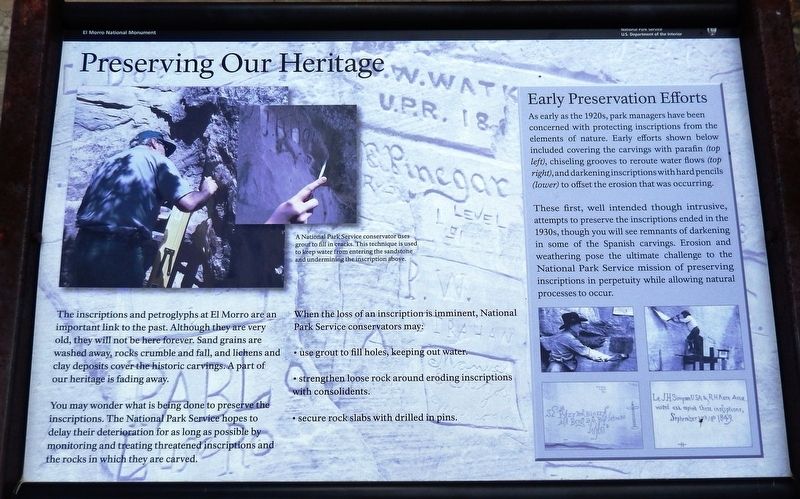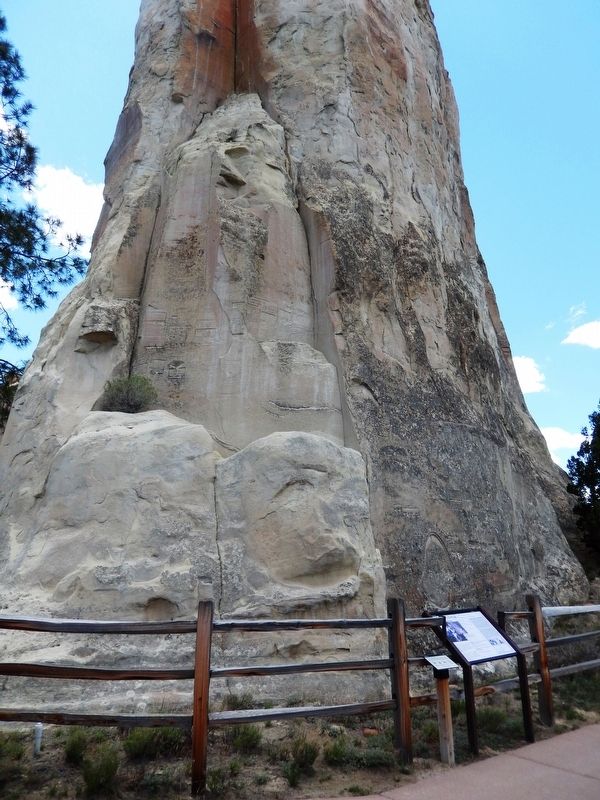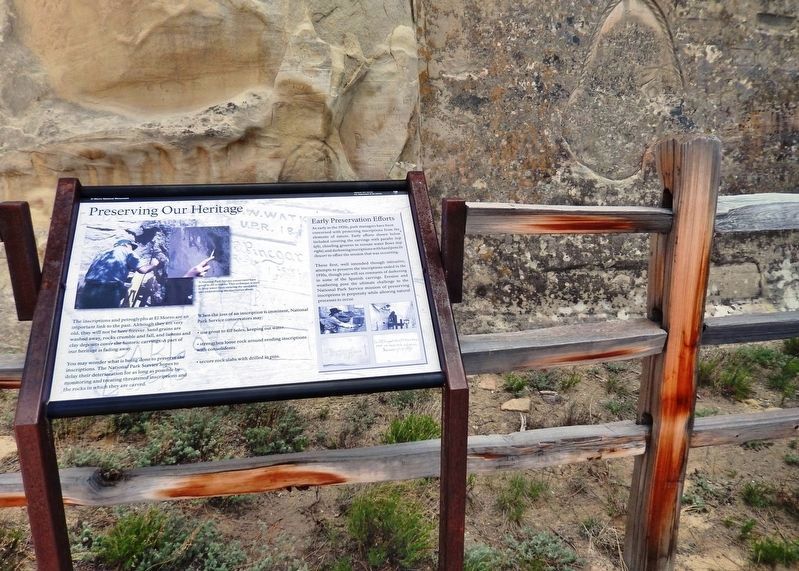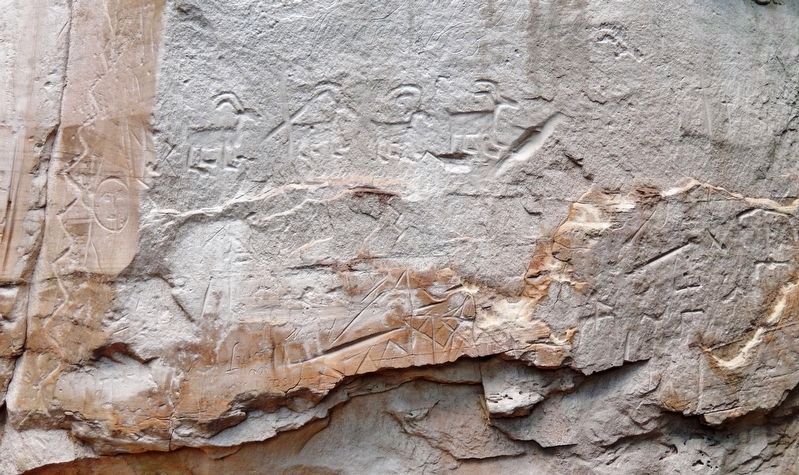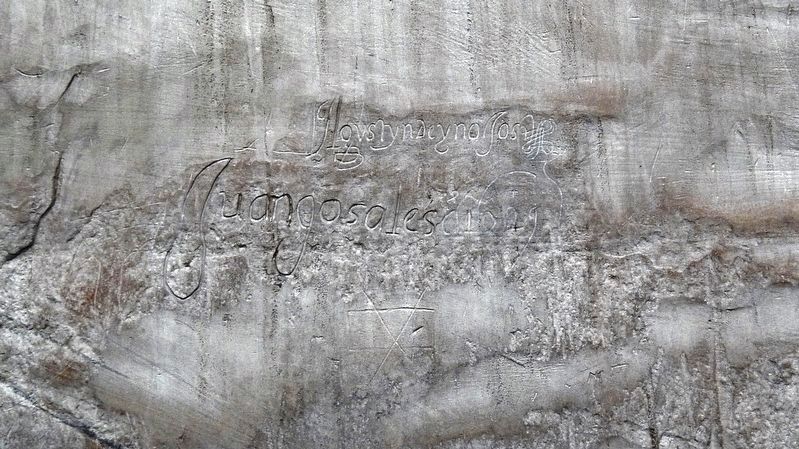Near Ramah in Cibola County, New Mexico — The American Mountains (Southwest)
Preserving Our Heritage
El Morro National Monument
You may wonder what is being done to preserve the inscriptions. The National Park Service hopes to delay their deterioration for as long as possible by monitoring and treating threatened inscriptions and the rocks in which they are carved.
When the loss of an inscription is imminent, National Park Service conservators may:
• use grout to fill holes, keeping out water.
• strengthen loose rock around eroding inscriptions with consolidents.
• secure rock slabs with drilled in pins.
Erected by National Parks Service, U.S. Department of the Interior.
Topics. This historical marker is listed in these topic lists: Anthropology & Archaeology • Parks & Recreational Areas.
Location. 35° 2.468′ N, 108° 20.972′ W. Marker is near Ramah, New Mexico, in Cibola County. Marker can be reached from El Morro National Monument Road, 0.9 miles south of Ice Caves Road (State Highway 53). Marker is located along the interpretive trail, about ¼ mile north of the El Morro National Monument Visitor Center. Touch for map. Marker is in this post office area: Ramah NM 87321, United States of America. Touch for directions.
Other nearby markers. At least 8 other markers are within 2 miles of this marker, measured as the crow flies. Lemonade Sumac (about 600 feet away, measured in a direct line); Oasis (about 600 feet away); Monumental Changes (approx. 0.2 miles away); Atsinna (approx. 0.3 miles away); Visitors Through the Ages (approx. half a mile away); Welcome to El Morro (approx. 0.6 miles away); El Morro National Monument Inscription Rock (approx. 0.7 miles away); Matilda Coxe Stevenson (1849-1915) (approx. 2 miles away). Touch for a list and map of all markers in Ramah.
Regarding Preserving Our Heritage. National Register of Historic Places #66000043.
Related markers. Click here for a list of markers that are related to this marker. El Morro National Monument
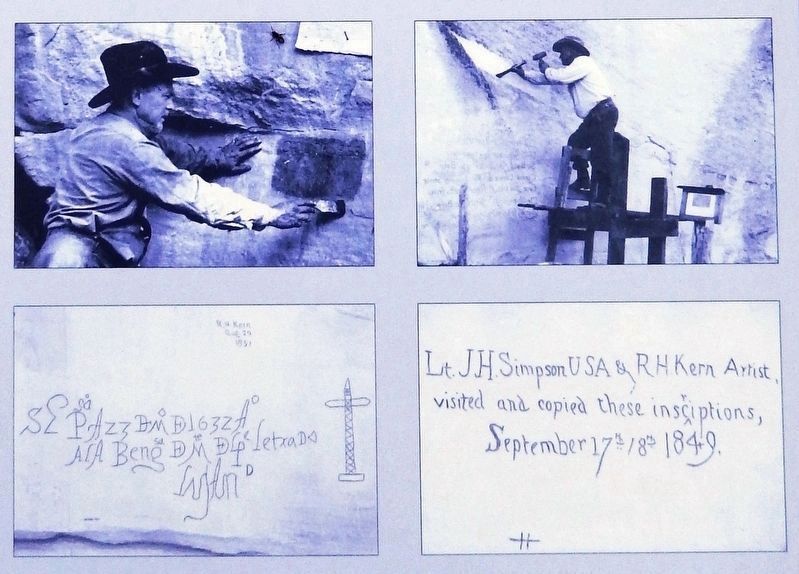
3. Marker detail: Early Preservation Efforts
As early as the 1920s, park managers have been concerned with protecting inscriptions from the elements of nature. Early efforts shown below included covering the carvings with paraffin (top left), chiseling grooves to reroute water flows (top right), and darkening inscriptions with hard pencils (lower) to offset the erosion that was occurring.
These first, well intended though intrusive, attempts to preserve the inscriptions ended in the 1930s, though you will see remnants of darkening in some of the Spanish carvings. Erosion and weathering pose the ultimate challenge to the National Park Service mission of preserving inscriptions in perpetuity while allowing natural processes to occur.
These first, well intended though intrusive, attempts to preserve the inscriptions ended in the 1930s, though you will see remnants of darkening in some of the Spanish carvings. Erosion and weathering pose the ultimate challenge to the National Park Service mission of preserving inscriptions in perpetuity while allowing natural processes to occur.
Credits. This page was last revised on December 24, 2020. It was originally submitted on December 23, 2020, by Cosmos Mariner of Cape Canaveral, Florida. This page has been viewed 110 times since then and 9 times this year. Photos: 1. submitted on December 23, 2020, by Cosmos Mariner of Cape Canaveral, Florida. 2, 3, 4, 5, 6, 7. submitted on December 24, 2020, by Cosmos Mariner of Cape Canaveral, Florida.
